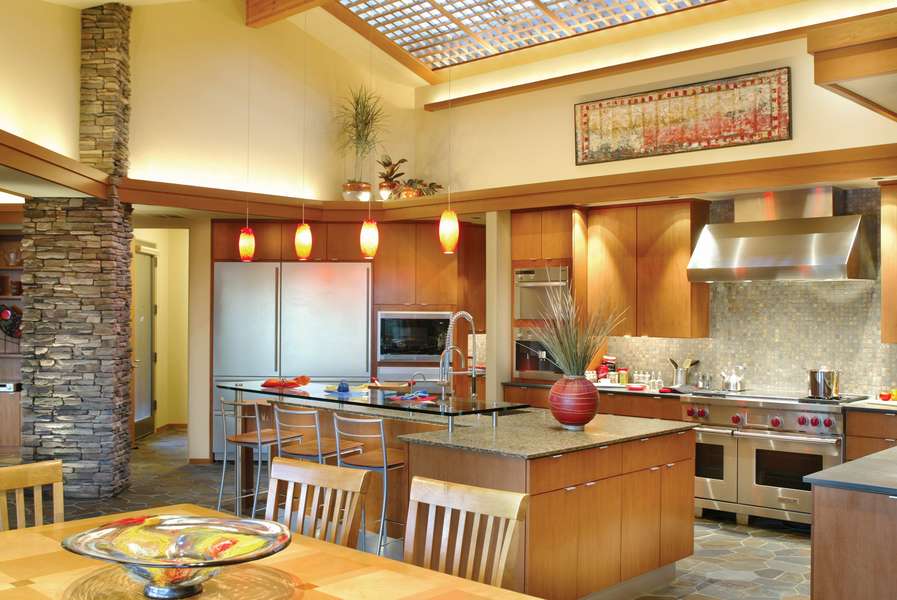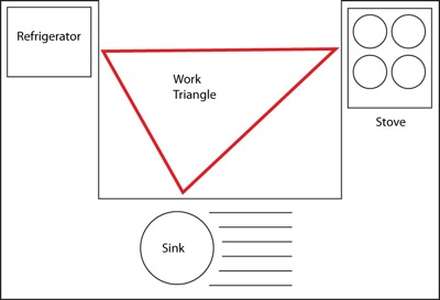What You Need to Know about the Kitchen Work Triangle
All Categories
About Our Plans Building a Home Building Your Home Green Building Help and Support Hobbies & Recreation Home Building Tips and Information Home Design Home Exterior & Framing Homepage Articles House Plan of the Week How We Work Ideas and Inspiration Industry News Infographics Information & Resources Inspired Spaces Interior Design Kitchens Mascord News Modified Home Designs Outdoor Living Personal Stories Plan Support Products and Services Real Estate Remodeling & Renovating Showstoppers
Most people choose kitchens for the cabinets, the roomy counter space, or the walk-in pantry - but not everyone chooses a kitchen based on its traffic flow. Designers, however, pay special attention to how the most important parts of the kitchen are arranged. In most cases, you’ll see the sink, range and refrigerator arranged into what is known as the “kitchen work triangle.” Read on to learn how you can use this design principle to your advantage.
What is the Work Triangle?
In its simplest form, the kitchen work triangle is a method for arranging a kitchen’s primary amenities so that you can draw a triangle on the floor between them. There is no set size for a work triangle – you could start with 8 feet between points and then increase or decrease the lengths of each side of the triangle based on whether the space feels cramped or too large.
In addition, your kitchen’s workspace doesn’t need to be configured in a triangle shape. Feel free to add other amenities (like the dishwasher or pantry) but make sure that everything within your workspace is within easy reaching or walking distance.
Why Use the Work Triangle?
The logic behind the work triangle is simple: By using a geometric shape to arrange your kitchen’s amenities, you’re creating an easy and effective traffic flow pattern in your home’s busiest room. If you were to lay out your kitchen in some other way – a straight line, for instance, with the sink, stove and refrigerator all along one wall – then you’ll spend lots of time carrying food and heavy dishes up and down your kitchen. The triangle lets you remove something from the refrigerator, turn and place it by the sink to prepare it and then turn and place it on the range once you’re ready to start cooking.
How to Design the Perfect Work Triangle
Your work triangle’s exact layout is largely a matter of personal preference. However, you should consider a few things as you plan your kitchen:
How much space do you want between each point of the triangle? Some people prefer roomy, open kitchens while others would rather place the kitchen’s amenities close together.
Do you want more than three points? You can make a trapezoid or any other shape by incorporating the features (the microwave, dishwasher or pantry) that you use most.
Don’t break up the triangle by placing objects within the lines formed by the triangle. If your sink is on one wall and the stove and refrigerator are on the opposite wall, placing an island in the center of the kitchen means that you’ll need to walk around the island as you move between all three points.
Every cook does things a little bit differently and because of that, every kitchen has its own unique layout. As you work with a designer on your custom house plans, keep your cooking habits in mind and make use of the work triangle to create a kitchen that works with you, not against you.

